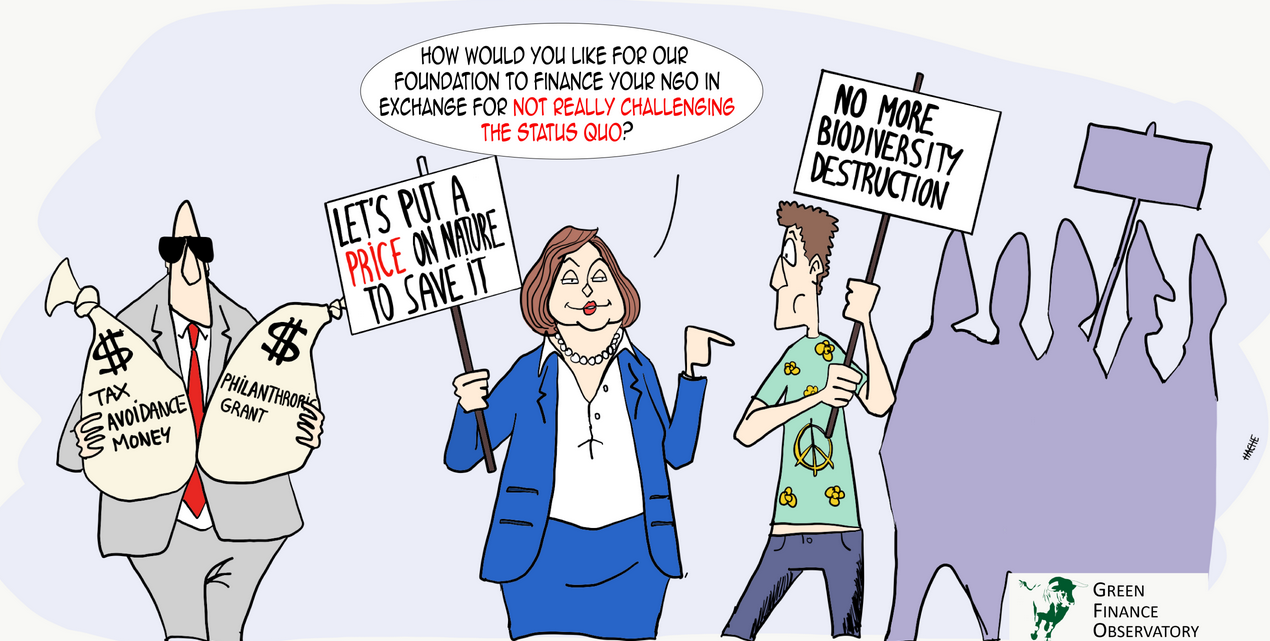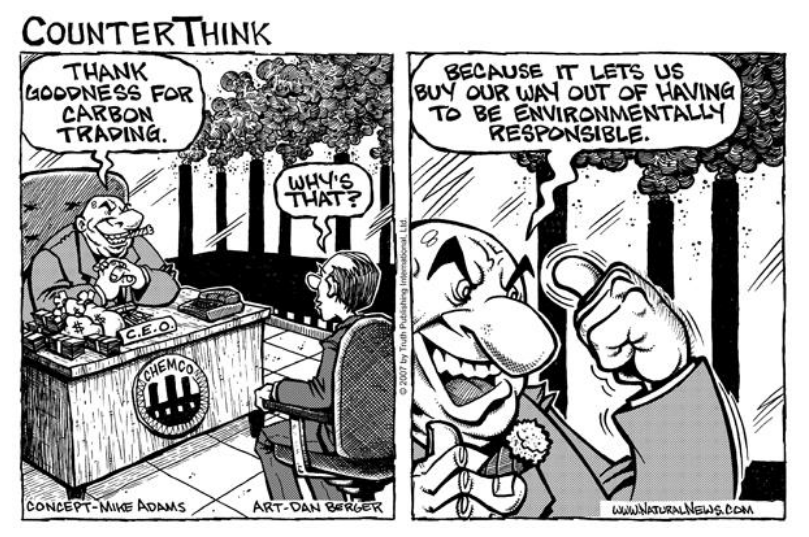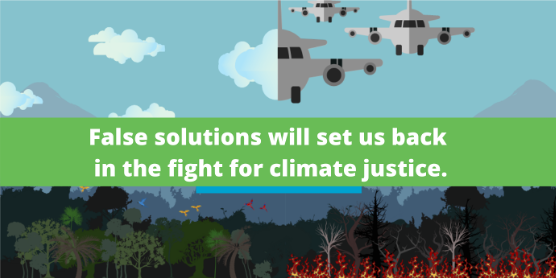Leave
the market economists
to fight among themselves over
the right price of carbon — let them relive their
Groundhog Day if they wish. The world is moving on
and we need to have the audacity
to think differently
and conceive of alternative futures.
–Kevin Anderson and Alice Bows, A New Paradigm for Climate Change (2012)
***
As the California legislature prepares to further entrench reliance on cap-and-trade as the foundation of state strategies to respond to climate change, Biofuelwatch staff member Gary Graham Hughes shares some perspective. (Originally published on September 5, 2025).
Our organization Biofuelwatch works internationally in protecting forests, native ecosystems and human rights from the excesses of extractive industry. We specialize in supporting communities in strengthening their engagement in decision making processes and in addressing the environmental and human rights harms from industrial bioenergy, and from other land-based climate mitigation approaches. This has inevitably led us to work on a variety of carbon markets issues in many different jurisdictions, and in private voluntary market spaces as well.
Our organization is closely monitoring developments in Sacramento as the California legislature responds to the demands of Governor Gavin Newsom to advance legislation for the re-authorization of the markets-based compliance mechanism, known in California as ‘cap-and-trade,’ for another 20 years, out to 2045. The rules governing the California carbon market are currently set to expire in 2030.
This is not the first time that our organization has engaged on policy development specific to the Western Climate Initiative, Inc. (WCI), the formal name of the California and Quebec markets-based compliance mechanism (cap-and-trade). From experience we know that these California policy spaces are some of the most arcane and complex environmental governance frameworks in existence. In that context it is important to recognize the importance of elevating a diversity of views and insights about the California cap-and-trade program, whether it be on specific mechanics or more broadly on narrative and political issues. A robust critique that helps inform effective climate justice oriented civil society involvement in these technocratic and difficult to access decision making processes is desperately needed.
A vibrant and even contentious debate is imperative in order to address the flawed science and erroneous assumptions that have been embedded in California’s markets-based approaches to (ostensibly) addressing climate change since their inception. The resistance to entertaining challenges to the assumptions underpinning the carbon market reflects the tight handrails that are placed by a majority of climate stakeholders around what is considered eligible for discussion when assessing the ramifications and impacts of cap-and-trade in California.
At times the debate around cap-and-trade hypothesizes remarkably profound reform to the market mechanism – and at other times the debate focuses on largely superficial dial turning for refining the market – but the core underlying assumptions justifying carbon markets are rarely or, dare we say, never questioned. Nevertheless, as international resistance to carbon markets grows, these assumptions must be challenged, lest California fall completely out of touch with the global climate justice movement while failing to effectively reduce real world emissions.
Affordability Implications of Cap-and-Trade and Busted Myths of Polluter Pays
The affordability and cost implications of the carbon market have emerged as central to all discussions about climate and energy policy in California. Affordability questions are indeed intrinsic to an equitable response to climate change.
However, there is a glaring unspoken dynamic in the state orbiting the myth of carbon pricing as an economically effective means to address climate change. In California, after all these years of grassroots demands for carbon pricing reform, if not abolition, the climate mitigation effectiveness of carbon pricing should be subject to profound scrutiny. Instead, the assumption that carbon pricing works to avoid catastrophic climate change takes on a mythical quality in the state, even as the data and science show that temperature overshoot, which is not an option, has moved from the horizon to the foreground, and that the market (i.e. carbon pricing) is clearly not achieving the necessary results.
Never is the dubious efficacy of carbon pricing as a climate mitigation tool raised as a concern.
That carbon pricing is inadequate to get needed results is never discussed.
However, the simple fact that the question of affordability and impacts on consumers is being raised as a crucial determining factor in the development of California climate and energy policy is a demonstration of one of the busted myths of carbon pricing as an effective climate mitigation mechanism: that the polluter pays.
By many estimates cap-and-trade has resulted in a perversion of the ‘polluter pays’ principle, as evidenced by the growing discussion of the ‘affordability’ of the carbon market for the regular consumer. In cap-and-trade the carbon pricing scheme has simply been turned into a business cost for polluters. And a fundamental rule of economics is that when costs increase, they get passed on to consumers.
The existing debates about cap-and-trade, for all the practical information about the California carbon market that is made available, and for the expressed concerns about the affordability of the mechanism, fails to look in depth at the implications of carbon pricing having simply become a business cost borne by consumers.
Another feature of carbon pricing as it manifests in the California cap-and-trade program, a feature that exposes another failure of the market, is that the existing carbon price never reflects the actual cost of extraction, processing and burning of fossil fuels and other high carbon energy products, such as liquid biofuels. The pricing is relegated to creating a carbon molecule commodity that can be traded; the price has nothing to do with the reality of the cost of the pollution.
 None of these critical doubts about carbon pricing are broached effectively in Sacramento discussions about cap-and-trade, neither to admit the doubts exist much less attempt to resolve them. Setting in motion an echo chamber dynamic in which the debate is ideologically beholden to the myths of carbon pricing as the most effective manner by which to respond to climate change, policy debates about cap-and-trade decline to challenge the free market paradigm upon which the construct of the carbon commodity is erected – and which is ultimately one of the primary drivers of environmental and climate degradation in California and globally. Never mind that the politics, the science and the data suggest that, at this juncture, a longer look by pollution trading proponents in the magic invisible-hand-of-the-market mirror is seriously warranted. The emphasis on putting a price on carbon takes on a religious quality, to the point that those who do publicly question the efficacy of carbon pricing end up being treated as heretics by the majority of players in the Sacramento establishment.
None of these critical doubts about carbon pricing are broached effectively in Sacramento discussions about cap-and-trade, neither to admit the doubts exist much less attempt to resolve them. Setting in motion an echo chamber dynamic in which the debate is ideologically beholden to the myths of carbon pricing as the most effective manner by which to respond to climate change, policy debates about cap-and-trade decline to challenge the free market paradigm upon which the construct of the carbon commodity is erected – and which is ultimately one of the primary drivers of environmental and climate degradation in California and globally. Never mind that the politics, the science and the data suggest that, at this juncture, a longer look by pollution trading proponents in the magic invisible-hand-of-the-market mirror is seriously warranted. The emphasis on putting a price on carbon takes on a religious quality, to the point that those who do publicly question the efficacy of carbon pricing end up being treated as heretics by the majority of players in the Sacramento establishment.
Carbon Management: Speculative Technologies to Extend the Life of the Fossil Fuel and Bioenergy Industries Have No Place in Cap-and-Trade
By far one of the most worrisome developments over the last several years of California climate policy deliberations has been the increasing promotion of the integration of carbon capture technologies into the cap-and-trade program, including the promotion of Carbon Capture and Sequestration (CCS) and even more speculative Carbon Dioxide Removal (CDR) geoengineering technologies as future offset protocol elements of the carbon market.
Our organization has engaged repeatedly before the California state legislature and regulatory agencies such as the California Air Resources Board raising the alarm about the predictable social and environmental harms that would be associated with the siting and operating of CDR technologies such as Bioenergy with Carbon Capture and Sequestration (BECCS) or Direct Air Capture (DAC). Our organization Biofuelwatch has also engaged repeatedly on policy development regarding the integration of carbon capture and CDR technologies into the European Union (EU) policy framework, including the European Union Emissions Trading System (EU-ETS). These matters have been the cause of great controversy in Europe; note as an example the letter that Biofuelwatch signed that was published on the “Real Solutions – Not ‘Net Zero’” website titled “Civil Society Blows the Whistle on the EU’s Reckless, Unscientific, Lobbyist Lead CCS Plans.”
These are among the concerns that civil society stakeholders, including our organization Biofuelwatch, have communicated to policy makers in California and the EU:
- Carbon capture technologies have been used to justify new and prolonged fossil fuel production.
- Carbon capture risks being used to greenwash the image of fossil fuel-intensive industrial sectors, for example in the production of plastics and fertilizers.
- Carbon capture technologies can be used to ‘hide’ the emissions from hydrogen and bioenergy production so they can be falsely labeled low-carbon fuels.
- Carbon capture can help the fossil fuel industry maintain business as usual.
Globally, as in California, carbon capture technologies are seen as being contrary to the pursuit of climate justice.
Carbon management in the form of dubious offsets under existing protocols is already a problem of scandalous proportions in the cap-and-trade program. The market needs fewer loopholes that polluters can manipulate to continue spewing pollution into the atmosphere, not more.
Speculative carbon management technologies like CCS and geoengineering technologies like CDR will only extend the lives of the fossil fuel and bioenergy sectors and have no place in the California carbon market.
Carbon Offsets Undermine Real Innovation and Are Making Things Worse
It is unfortunate that in this era of egregious climate science denial that so many environmental, climate and energy transition professionals remain hypnotized by the scientifically dubious utilization of carbon offsetting as a climate change mitigation tool.
The ongoing reliance on and proposed use of carbon offsets in various elements of California climate policy, including but not limited to cap-and-trade, is without scientific legitimacy and is dangerously misleading. Informed analysis concludes that offsetting is worse than doing nothing because it almost certainly contributes to a net increase in the absolute rate of global emissions growth. It may look good on paper, but in the atmosphere such Enron accounting is not convincing as it is a spurious argument that offsets reduce emissions to levels at or before those that would have transpired had the activity being offset not occurred.
A central problem with carbon offsetting is that the false promise of carbon neutrality triggers a rebound away from meaningful mitigation and towards the ongoing reliance on and development of further high carbon infrastructures, such as CCS and CDR, at a time when a rapid and drastic transition needs to be undertaken by human society away from a high carbon economy.
When offsetting is deemed to have equivalence with real emissions reductions at the source the incentive to move to lower carbon technologies, behaviors and practices is reduced accordingly. As we have already seen on repeated occasions, in California and elsewhere, carbon offsetting militates against market signals to improve low carbon travel and technologies, while politically facilitating the ongoing pursuit of capital-intensive development of high-carbon infrastructure. Our organization, based on our experience around the world, recommends that California make a strong move away from the False Solution of relying on carbon offsetting in climate policy, whether it be for local development projects or with the market-based mechanism of the California cap-and-trade program.
Many stakeholders in California have the expertise to provide critical insight on the problems with carbon offsetting. We certainly hope legislators will recognize the informed critique of the market as an alarm that the time has arrived for deprioritizing carbon offsetting in the cap-and-trade program. In practical terms, the moment has arrived to make a plan to sunset offsets and for California to demonstrate real and courageous climate leadership to secure direct emissions reductions at the source.
Rebranding of California Cap-and-Trade as ‘cap-and-invest’ is a Cynical Ploy
One of the top-level public relations tricks circulating in Sacramento as the legislature follows along with the Newsom administration plans for expanding oil drilling in the state is the suggested rebranding of cap-and-trade as ‘cap-and-invest.’
Such semantics reflect the understanding by decision makers that the shortcomings of cap-and-trade, whether it be the failures of the carbon market to reduce real world emissions, the intensification of pollution hotspots in vulnerable communities, or the revelations around problematic offset projects, have become of public concern. Available text from the legislature has shown that the proposed reauthorization of the cap-and-trade program is likely to include support for even more offsets, now in the form of speculative and risky carbon capture technologies and geoengineering.
But the legislative language also requires a change in the name of the program to ‘cap-and-invest’ to make it all sound more palatable in the face of waning public support for the carbon market.
The change in name is superficial only, as the trading of carbon credits would remain central to the market. The name change is clearly intended to create momentum for an eventual linkage of the new Washington State carbon market with the existing Western Climate Initiative, Inc., the actual formal name of the California – Quebec carbon market that has always been known as cap-and-trade. Washington State tried to get ahead of the reputational risk of supporting unjust and inequitable carbon trading from the get go, hence the invention of the ‘cap-and-invest’ moniker for the carbon market in the Evergreen State.
Don’t be deluded, call it what you will, pollution trading remains at the heart of the program.

World’s Climate Fight Needs Fundamental Reform
In an interview published early this year in The Guardian, the United Nations (UN) Special Rapporteur on Climate Change, Elisa Morgera, highlighted how false narratives and hype around tech fixes are diverting attention from real equitable solutions.
Special rapporteurs are human rights experts appointed by the UN to investigate, report on and advise on specific themes or geographies.
At last year’s Conference of the Parties (COP) to the United Nations Framework Convention on Climate Change (UNFCCC) Ms Morgera and an UN expert on foreign debt issued a strong statement condemning the decision at the opening of the COP to fast-track and prioritize carbon markets over other, more effective climate solutions, and without transparency or proper consideration of the negative human rights impacts.
Ms Morgera is quoted in the interview as saying that “after 30 years, evidence that carbon markets are contributing to mitigation or helping mobilize finance is just not there.”
This is not the opinion of rag tag low bagger ‘keep it in the ground’ climate justice advocates; Ms Morgera is a professor of global environmental law at the University of Strathclyde in Glasgow, Scotland.

California would be well served by looking to the global climate justice community for guidance on these issues. It is time to fight back against carbon markets, flag them for what they are as a False Solution, and correct course before it is too late. We are precipitously close to tumbling straight over the cliff that looms directly in our current path. It is time to stop mindlessly following the Pied Piper of carbon pricing and markets-based approaches to climate change. Failure to do so will only ensure that California will be trapped helplessly under the oppressive weight of a carbon trading regime that guarantees the fossil fuel and bioenergy industries will continue setting the climate agenda in the state, and the world, for decades.
